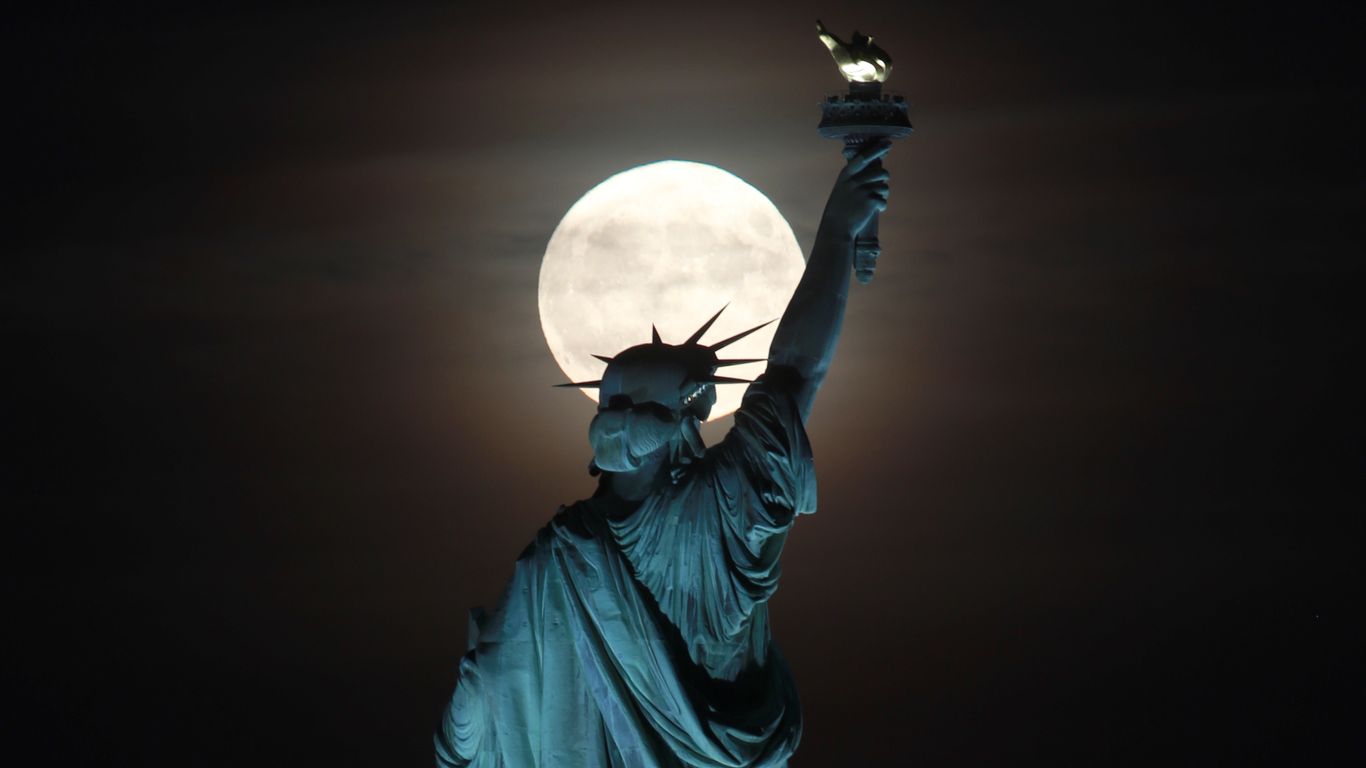
A "wobble" in the moon's orbit will combine with rising sea levels due to the Earth's warming to bring "a decade of dramatic increases" in high-tide coastal floods across the U.S. in the 2030s, NASA warns in a new study.
Why it matters: Low-lying areas near sea level already increasingly at risk from flooding will see their situation "only get worse," per a statement from NASA administrator Bill Nelson.
"The combination of the Moon's gravitational pull, rising sea levels, and climate change will continue to exacerbate coastal flooding on our coastlines and across the world."— Nelson
Of note: Phil Thompson, an assistant professor at the University of Hawaii and the lead author of the study, published this month in Nature Climate Change, said high-tide floods involve less water than hurricane storm surges.
- But "if it floods 10 or 15 times a month, a business can't keep operating with its parking lot under water," Thompson said.
- "People lose their jobs because they can’t get to work," he added "Seeping cesspools become a public health issue."
The big picture: Scientists have known about wobbles in the orbit of the moon, which takes 18.6 years to complete, since 1728.
- While such events are not dangerous on their own, what's new is how one of the wobble's effects on the moon's gravitational pull — the main cause of Earth’s tides — will combine with rising sea levels resulting from the planet's warming, according to NASA.
What they did: For the study, researchers found the tipping points in flood numbers by analyzing 89 tide gauge locations in every coastal U.S. state and territory but Alaska.
- "They created a new statistical framework that mapped NOAA's widely used sea level rise scenarios and flooding thresholds, the number of times those thresholds have been exceeded annually, astronomical cycles, and statistical representations of other processes, such as El Niño events, that are known to affect tides," per a NASA statement.
- The researchers projected results through 2080.
State of play: We're now in the tide-amplifying part of this cycle. Along most U.S. coastlines, sea levels haven't risen too much, but high tides regularly top flooding thresholds.
The bottom line: By the next tide-amplifying cycle in the mid-2030s, the wobble in the moon's orbit will combine with rising sea levels.
- "The higher seas, amplified by the lunar cycle, will cause a leap in flood numbers on almost all U.S. mainland coastlines, Hawaii, and Guam," NASA warns.
- Far northern coastlines, like Alaska's, will be spared for another decade or longer because these land areas are rising due to long-term geological processes.
https://ift.tt/36xuPoq
Science
No comments:
Post a Comment